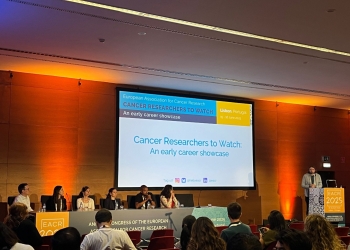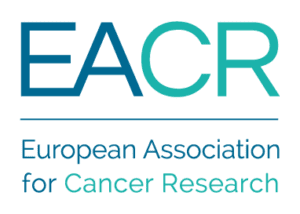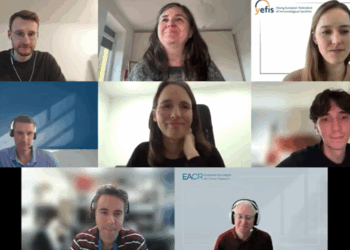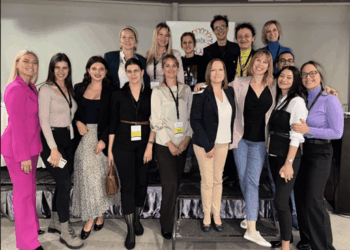The EACR’s ‘Highlights in Cancer Research’ is a regular summary of the most interesting and impactful recent papers in cancer research, curated by the Board of the European Association for Cancer Research (EACR).
The list below appears in no particular order, and the summary information has been provided by the authors unless otherwise indicated.
Use the dropdown menu or ‘Previous’ and ‘Next’ buttons to navigate the list.
Pradella, D., Zhang, M., Gao, R., Yao, M.A. et al. Nature. 637: 955–964. (2025).
doi: 10.1038/s41586-024-08318-8.
![]() Summary and graphical abstract by Alexandra Boitor, EACR Scientific Officer
Summary and graphical abstract by Alexandra Boitor, EACR Scientific Officer
Summary of the findings
The study of tumorigenesis and tumour progression relies on modelling cancer development and progression in preclinical models. While advances in gene editing over the past few decades enabled engineering tumour models for a wide range of gain- and loss-of-function mutations, other frequent mechanisms involved in oncogene activation, such as focal amplifications, are underexplored due to the lack of appropriate tools.
In this paper, Pradella et al. developed a method to induce, track and engineer the formation of oncogenic ecDNAs. The method is based on Cre- LoxP recombination and uses two inducible fluorescent markers: mScarlet and GFP, whose expression is induced upon recombination. In this system, mScarlet is linked to the linear chromosome, and GFP is linked to the circularizable fragment, allowing the identification of successful tandem duplication by the double fluorescent label. Further on, the authors provide proof of concept for the use of this system both in vitro (MDM2 oncogene in HCT116 cells) and in vivo (MDM2 and Myc genes in mice), showing that the GFP fluorescence could act as a semiquantitative measure of ecDNA abundance and a marker of ecDNA loss. The authors also show that engineered ecDNAs harbour the ability to immortalise primary cells, effectively inducing malignancy upon additional HRASG12V transduction or transfection with MYC transgene.










